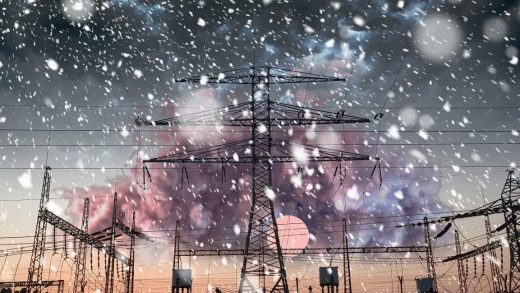During a power outage, this tech keeps the electricity on in the most important places
When a deep freeze hit Texas in February and millions of people were left without power for days—killing some residents because they had no heat and got hypothermia—it exposed multiple problems with how the electric grid runs in the state. One issue: When there was a sudden power shortage, the grid wasn’t smart enough to send electricity where it was most needed. In Houston and Austin, empty skyscrapers were lit up at night while people in adjacent neighborhoods were left in the dark.
Here’s a look at the city skyline tonight, with many of the surrounding homes and businesses in the dark. pic.twitter.com/W5N2hfH02v
— ABC13 Houston (@abc13houston) February 16, 2021
In those cities, downtown skyscrapers were all connected to a central circuit—but so were hospitals, and the power couldn’t be turned off without also shutting off power for the hospitals. But it’s possible to manage energy differently. A platform from Intel, now being deployed by several different utility companies, is designed to help the grid communicate with individual buildings in real time. “It’s integrated with the grid and the building,” says Michael Bates, global general manager of energy at Intel. “The grid, which is sensing the power needs across all of its territory, can turn things off and know exactly what is turning off, and keep other things on.” A hospital could stay connected, while other buildings nearby could shut down temporarily.
The platform is also designed to work with renewable energy coming from multiple, intermittent sources instead of the traditional model of one source of power from a centralized coal or gas plant. Being able to quickly tap into distributed sources of renewable energy makes the grid more resilient, since it may be possible to get power from one location while others are down. The tech can also help manage the demand for electricity, so utilities can incentivize customers to use power at certain times or use less when there’s reduced supply.
This type of system is also necessary to make renewable energy feasible, since grid operators need to be able to rely on renewables in the same way that they relied on coal plants that were always producing energy (utilities will also need to store energy in batteries). “Highly distributed, intermittent sources of energy need to, at some point, look and act like that baseload, or you’re never going to replace the coal plant,” says Bates. “If it’s too intermittent, the business model breaks down. With the application of real-time, AI decision making, you can consolidate all those distributed loads, and then smooth out the peaks and valleys by balancing it and make it deliver energy in the same way the coal plants are delivering energy.”
Fast Company , Read Full Story
(19)



